In the late 18th century, King Jeongjo attempted something bold—to move Korea’s capital 30 kilometers south to escape Seoul’s big city drama.

That effort failed and over two centuries later, Suwon (수원시) is only a provincial capital. Nevertheless, the city of one million is an attractive alternative to Seoul.
Nicknamed the “City of Filial Piety,” Suwon showcases the Confucianism that still pervades much of Korean culture.
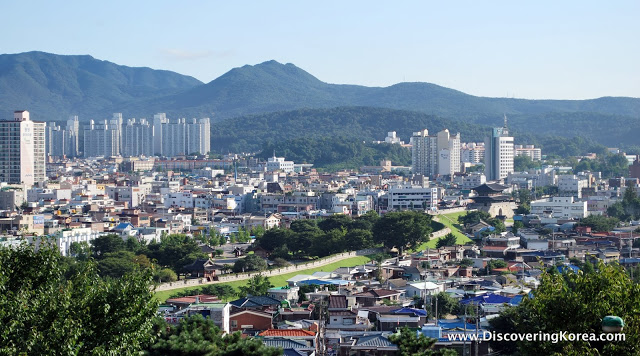
From its two UNESCO-recognized treasures, the Suwon Hwaseong Fortress (수원화성) and Yunggeolleung Royal Tombs (융걸릉), to the graceful Hwaseong Haenggung temporary palace (화성행궁), the city’s most popular landmarks promote respect for family and authority.
In modern Suwon, however, the head of household might work at homegrown favorite Samsung Electronics during the week, and on weekends take the family to World Cup Park.

Once there, fans enthusiastically watch the Samsung Bluewings kick the ball towards their next K-League title.
But if you don’t feel like supporting Korea’s biggest conglomerate, perhaps a visit to the attractive Gyeonggi Art Center complex and gardens is a better fit.
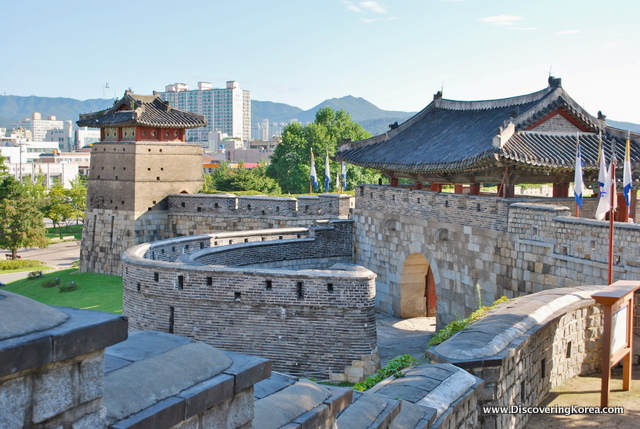
Or, for the night owl, make your way to the bars and clubs on Rodeo Street and around Suwon’s 16 colleges and universities.
The Suwon Sampler
Suwon may be Korea’s only completely walled city, but long ago its neighborhoods moved beyond the fortress gates.
Nevertheless, the majestic Suwon Hwaseong Fortress remains Suwon’s focal point, and most of city’s best tourist destinations aren’t far from it.

From Suwon Station (수원역), take a pedestrian overpass and walk eastward. Via bus or by foot, one kilometer away is Suwon Hyanggyo (수원향교), a Confucian academy that dates to the 13th century.
Relocated in the late 1700s when the fortress was under construction, you can enter the modest complex through a side entrance and prostrate yourself before a large statue of Confucius.
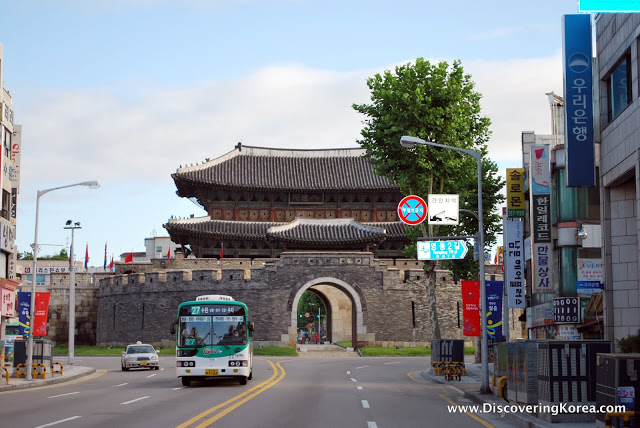
Back on the main street, take a quick look at the Former Bugukwon Building, a handsome three-story gray brick building from 1916. A few blocks on, turn left at the big intersection and look ahead—the stately Paldalmun gate (팔달문) should come into view.
Walk about 300 meters in its direction before making a right turn. The brief detour is to pay respects to Geobuksandang, a colorful “turtle shrine” first built circa 1790 to promote peace and prosperity for Yeongdong Market’s merchants.
Inside is an altar where offerings of food, flowers and incense are still made each October 7th.
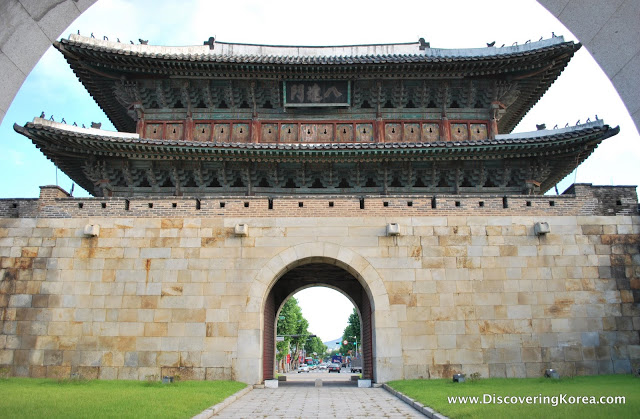
Retrace your steps and make a bee-line for Paldalmun, the southern entrance to Suwon Hwaseong Fortress. The gate, whose name means, “open in all directions,” is actually protected by a stone ongseong semicircle.
The 5.7-kilometer wall starts one block west. Follow it up Paldalsan mountain (팔달산) and note that of the 48 pavilions, gates and sentry towers that were built along the wall in 1796, 41 remain.
Among them, the Seojangdae command post and adjacent Seonodae crossbow tower are outstanding examples of integrating western and eastern architectural styles to create a beautiful, yet formidable bulwark against foreign invaders.
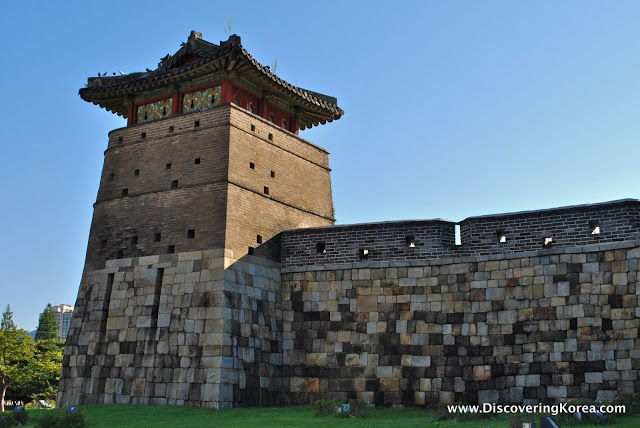
Farther along the ridge line is the striking Seobuk Gongsimdon observation tower. The powerful three-story stone and brick edifice is peppered with holes for cannons and archers. Further afield is Janganmun gate (장안문).
The largest gate ever built in Korea, it was destroyed during the Korean War but rebuilt in 1979.
At this point, take the road that leads away from Janganmun gate to Hwaseong Haenggung (화성행궁). The largest of the Joseon Dynasty’s temporary palaces, it once consisted of 576 rooms!
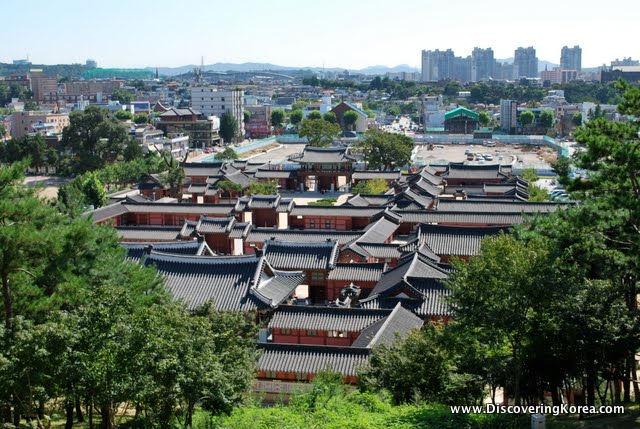
The 2010 reconstruction was a dramatic downsizing, but it’s still worth a visit. While you’re there, stop by Hwaryeongjeon, which enshrines King Jeongjo’s spirit tablet, and the Suwon Hwaseong Museum, which is located across the street just past the Suwoncheon stream (수원천).

At this point, if your feet need a rest why not enjoy Suwon’s signature meal—barbecue beef ribs—at Yeonpo Galbi (연포갈비). Afterwards, you can hop on the dragon trolley, which stops outside the palace and five other sites along the wall for just W1,500.
Walkers can follow the stream northwards to the wall’s Hwahongmun (화홍문). The pavilion—which is a popular napping spot—spans the waterway atop seven graceful stone arches.

As the wall continues eastward, you’ll arrive at a large lawn where visitors try their hand at traditional Korean archery (five arrows for W1,000). From there, the wall makes a direct shot past the Bongdon smoke towers to Jidong Market (지동시장), which is just 200 meters from Paldalmun gate.
After circumnavigating the fortress, it’s time to explore contemporary Suwon. From the bus stop just north of Paldalmun, the southbound #98 bus will go to Hyowon Park and the Wolhwawon Traditional Chinese Garden (17 mins.).
The two parks make up the top third of 1-kilometer civic belt near city hall. The central section is home to the expansive Gyeonggi Arts Center, while the bottom third is occupied by Ingye Art Park and Suwon Outdoor Concert Hall.
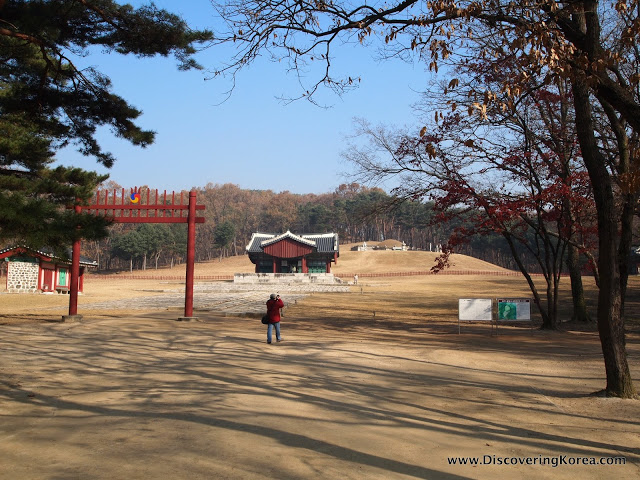
If time allows, wrap up your Suwon walkabout with a tour of the Yunggeolleung Royal Tombs and nearby Yongjusa Temple. Buses depart opposite the concert hall’s east entrance and pass Suwon Station before reaching the tombs (65 mins.).
The serene setting is the final resting place for King Jeongjo and his wife, Queen Hyoui. By the king’s request, his father’s and mother’s remains were moved here. Given the king’s broad legacy on Korea, it’s a fitting conclusion.
For Your Information…
| Open: | Suwon Hwaseong Fortress is open 9:00-18:00 (until 17:00 Nov-Feb); Suwon Hyanggyo is open 9:00-17:00 M-F, on Sat for groups, Closed Sundays. |
| Admission Price: | Suwon Hwaseong Fortress: 1,000; Suwon Hyanggyo: Free; |
| Address: | Suwon Paldal-gu Maesan-ro 1(il)-ga 18 ) Suwon Culture and Tourism Office’s Suwon Station Information Center |
| Directions: | From Seoul, take Seoul Metro Line 1 to Suwon Station. |
| Phone: | 031-228-2068 |
| Website: | Official Site |
About Matt Kelley
Matt Kelly is native of the US Pacific Northwest and is half-Korean by ethnicity. He lived in Korea for five years and has written hundreds of travel guides for Wallpaper, TimeOut, the Boston Globe and Seoul Magazine and was a host for several different variety shows on Korean radio and television.
